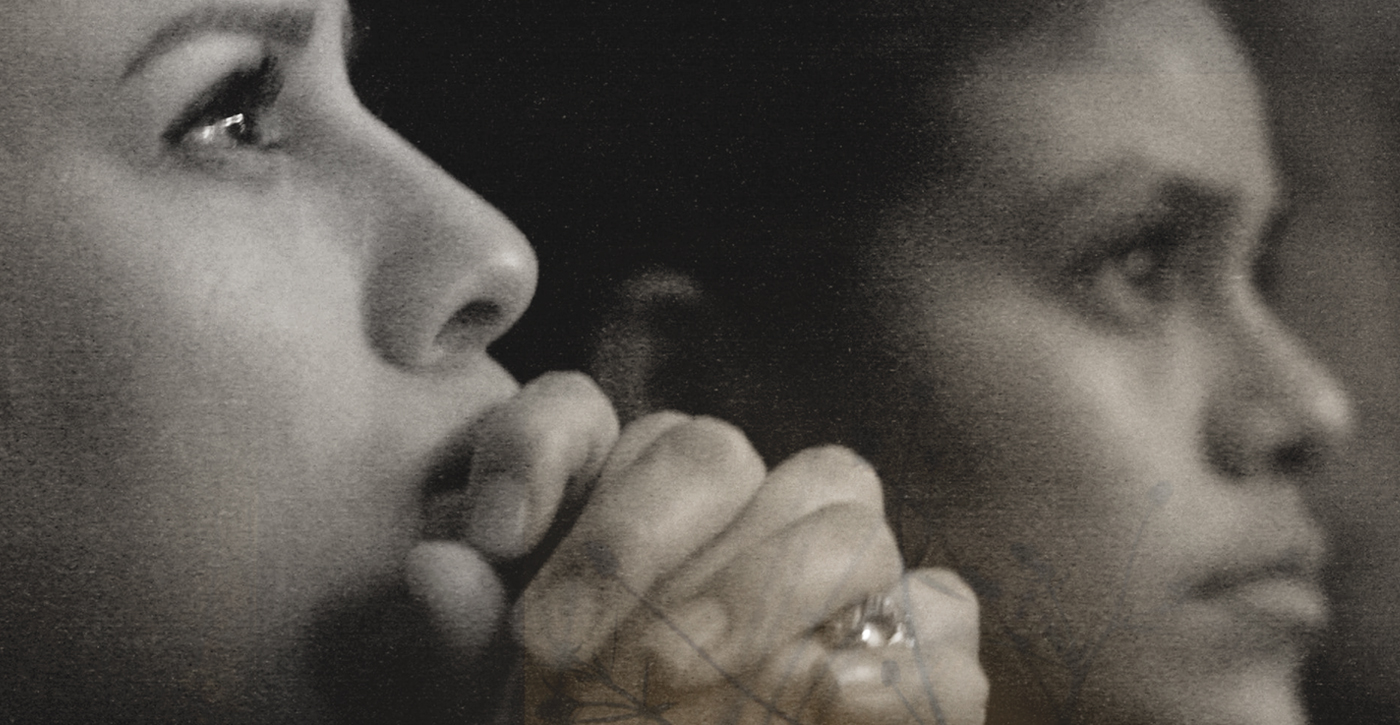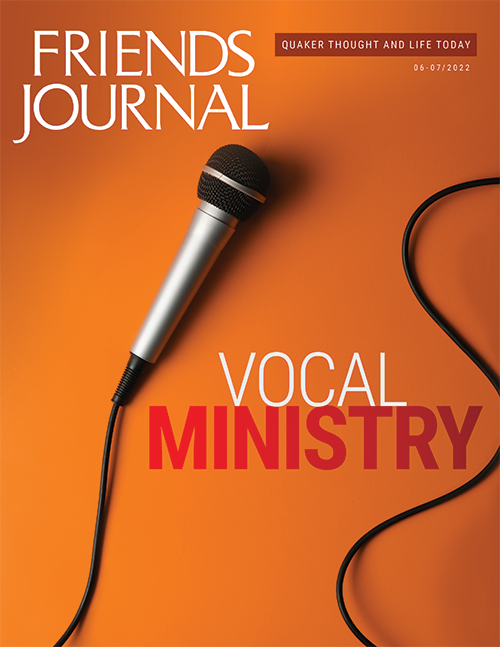What Makes a Gathered Meeting?
Individuals make a conscious decision to attend a Quaker meeting for worship. Each person gathers with others to engage in contemplative worship, as distinct from meditation, knowing that a leading of the Spirit may or may not be forthcoming, and that a completely silent hour of worship in itself may be spiritually restorative and inspirational.
The terms Quakers use to describe a particularly centered meeting for worship are “gathered meeting” and “covered meeting.” Such a meeting includes several components: the decision to attend; preparation; entry; settling into the silence; waiting for and then sensing inspiration, which is an inspired leading from the Inner Light; vocal ministry; finishing; and settling back into the gathered silence. Friends are keenly aware that a person so moved can share insight into religious Truth, what George Fox (1624–1691) identified in his Journal as “the infinite love of God.” How does contemplative worship achieve this idealistic aspiration?
Contemplative worship is an action, a state of being, an expectant attitude of seeking Divine Light. The practice of personal meditation may be beneficial, and anyone may initiate contemplative worship alone or with others. Settling into a prayerful attitude to focus on the Eternal may be helped by having a regular, dedicated time of worship. Private study may also be of assistance, as may talking with others. One’s desire to listen for the still, small voice of God within one’s very soul is paramount. Talk, study, thought, joining with others, symbols, and even mantras all may be helpful and produce feelings of tranquility and serenity. However, there are no guarantees that devout silence, deliberate gathering, or prayerful meditation will evoke an epiphany. Contemplative worship is to wait upon Divine Providence for an all-pervading sense of inner peace, in which an encounter with the Spirit of Divine Love is sensed, felt, and realized.
The following poem expresses the inner struggle some people experience when they come to a Quaker meeting: to try to clear their minds of uncharitable thoughts and discover the ocean of Light and Love that flows over the ocean of darkness. The progression in the poem, “Contemplative Worship,” moves through stages of busyness, patient waiting, and renewing of the spirit into a sense of inner peace.
Be still and know that I am God.
Busy thoughts swirl.
Busy this, that, and the other thing. What’s next? Prioritize. Delegate.
Busy meeting children’s needs. Busy meeting spouse’s needs.
Busy chores: meal preparation, anxiousness, cleaning up.
Busy yard work: planting, weeding, mowing.
Busy errands: banking, shopping, auto servicing.
Busy with today’s mental list; anticipate tomorrow.
I want my time, fun time, social time, too.
Rest in the Lord, and wait patiently for him.
Choose a center, quiet the mind, then focus.
Choose animals: sleeping puppies, grazing horses, pollinating bees.
Choose vegetables: snow peas, ears of corn, carrots, turnips.
Choose minerals: gold, silver, lead, alabaster, marble.
Choose visions and dreams: peace, serenity, justice.
Choose memories: family, siblings, education, trips, vacations.
Choose prayers: familiar ones, extemporaneous ones.
Select to be empty: nada, nothing, naught, zilch.
They that wait upon the Lord shall renew their strength.
Seek comfort in body, mind, and spirit.
Seek that which is good, true, and beautiful.
Seek silence, the sacred, the sacramental, reflect.
Seek the holy. Not me, but the Other. Pray for others.
Seek the nonce. This time is time out from the hurly-burly.
Seek stillness in heavenly calm to be present in this moment.
Seek out a deeply personal image: a ring, an embrace, a dream.
Discover the aura of inner peace.
Let not your heart be troubled.
Bless those who are ill, fearful, worried, anxious, angry.
Bless those who need intervention.
Bless those who are in transition.
Bless those who are controlling.
Bless those who are in doubt.
Bless those who seek.
Bless those who are sick, mourn, hungry, poor.
Encounter your contemplative key that ignites inner serenity.
The biblical quotations are from Psalm 46:10, Psalm 37:7, Isaiah 40:31, and John 14:1. Please note that the word “ignites” is used advisedly for the “stirring of the spirit”; it is not a passive event but a dynamic interior, cathartic fire. Such an encounter can be life-changing!
Preparation for worship may include homework, such as inspirational reading, listening to soothing music, touching base with a friend, showing love toward another, and allowing enough time to travel without rushing. The convention is that worship begins at the appointed time when the first person sits quietly in the meetingroom or designated gathering area. Initial polite greetings, although certainly appropriate, need to end. Friends intentionally gather together to worship.
Two classic definitions of private contemplative prayer are useful to the process of engaging in contemplative worship. One type is called “cataphatic” prayer, in which the seeker makes use of content, words, images, symbols, and ideas to become still in body, mind, and spirit. The other type is called “apophatic” prayer, which has no content. It is a means in which the seeker empties the mind of words and ideas, and simply “waits” in the Divine Presence. Centering prayer is apophatic. Both methodologies of contemplative prayer aspire to access the Divine Mystery.
Entry into worship involves prayer, awareness of others, personal reflection, and divine inspiration. The intent of a meeting for worship is to acknowledge the common desire to seek Truth. Friends, when led to give vocal ministry, need to speak loud enough to be heard, clearly enough to be understood, and briefly enough to be considerate in sharing the dedicated gathered worship time.
Being led to vocal ministry is often a spontaneous happening. It may result from some tangible source or deep thought or be inspired by a specific incident. The ministry may speak to an individual or corporate need. The motivation to speak arises when the substance has first been held in the Light and found to be True. Vocal ministry can then be offered.
The motivation to speak rises when the substance has first been held in the Light and found to be True. Vocal ministry can then be offered.
Elders share responsibility for encouraging appropriate silent and vocal ministry. A Quaker meeting for worship is not a classroom, literary society, or debate club. It is not a bully pulpit in which to express opinions to a captured audience. It is not an opportunity for a stage show performance.
Learning may occur and fresh insights may be enlightening. Poetic expression or beautiful singing may be uplifting. Personal experience may be providential. Heartfelt prayer may be a welcome addition. The meeting for worship is Spirit-led, not crisis-led.
Simplicity in vocal ministry is sometimes difficult to achieve. The intensity of simple, clearly articulated ministry, however, is weighty. A gathered meeting for worship is achieved when peace, harmony, lucidity, and love have been sensed and indeed felt by all.
Vocal ministry ends when the spoken words are complete and the person sits and continues to silently worship in the loving embrace of the meeting. The convention is that each offering of ministry needs time to settle into the collective Light before someone else rises to speak, so that they can receive the same courtesy of attentive listening. Contemplative silence and vocal ministry are each valuable in their own right. It is an adventure in faith to seek the will of God by participating in a gathered worshipful experience.
The clerk usually indicates the end of the meeting for worship by shaking hands with another, and all participants share in the closure by shaking hands with their neighbors. Faith is converted into works in the world as those present exit and return to their families and to their places of work, freshly renewed.




I met Sheldon many years ago in Canada and was very interested to see his name and article here on “contemplative worship”. I was not born a Friend but joined Toronto Meeting in 1966. I’m still reading the article but am already pleased with it for giving me a name for what we do in Meeting, i.e.”contemplative worship”. I have usually described it to non-Quakers as “sort of group meditation” but I knew that wasn’t quite right. Now I have another short name for it. Thank you Sheldon and Friends Journal.
What I love about Quakerism is its strong emphasis on “that of God” in everyone. (This revelation saved my life). Sometimes however, this unique emphasis of Friends results in the transcendent God, The Lord, being de-emphasized. A covered meeting is clearly The Lord gathering the Holy Spirit in each individual together as one. There is an unequivocal experience of Oneness. For those of us who believe with Fox that “There is one, even Christ Jesus, that can speak to thy condition” [of being lost with nowhere to turn], this is an experiential understanding of the Trinity, and we give Him all the glory.
Is there any fluidity or connection between the Quakers and the Catholics
who practice Centering prayer (as taught by the late monk Fr Thomas Keating)?
If so, I’m interested in chatting about this topic. I’m from the Catholic side of
the house, but I’m deeply interested in Quakerism.